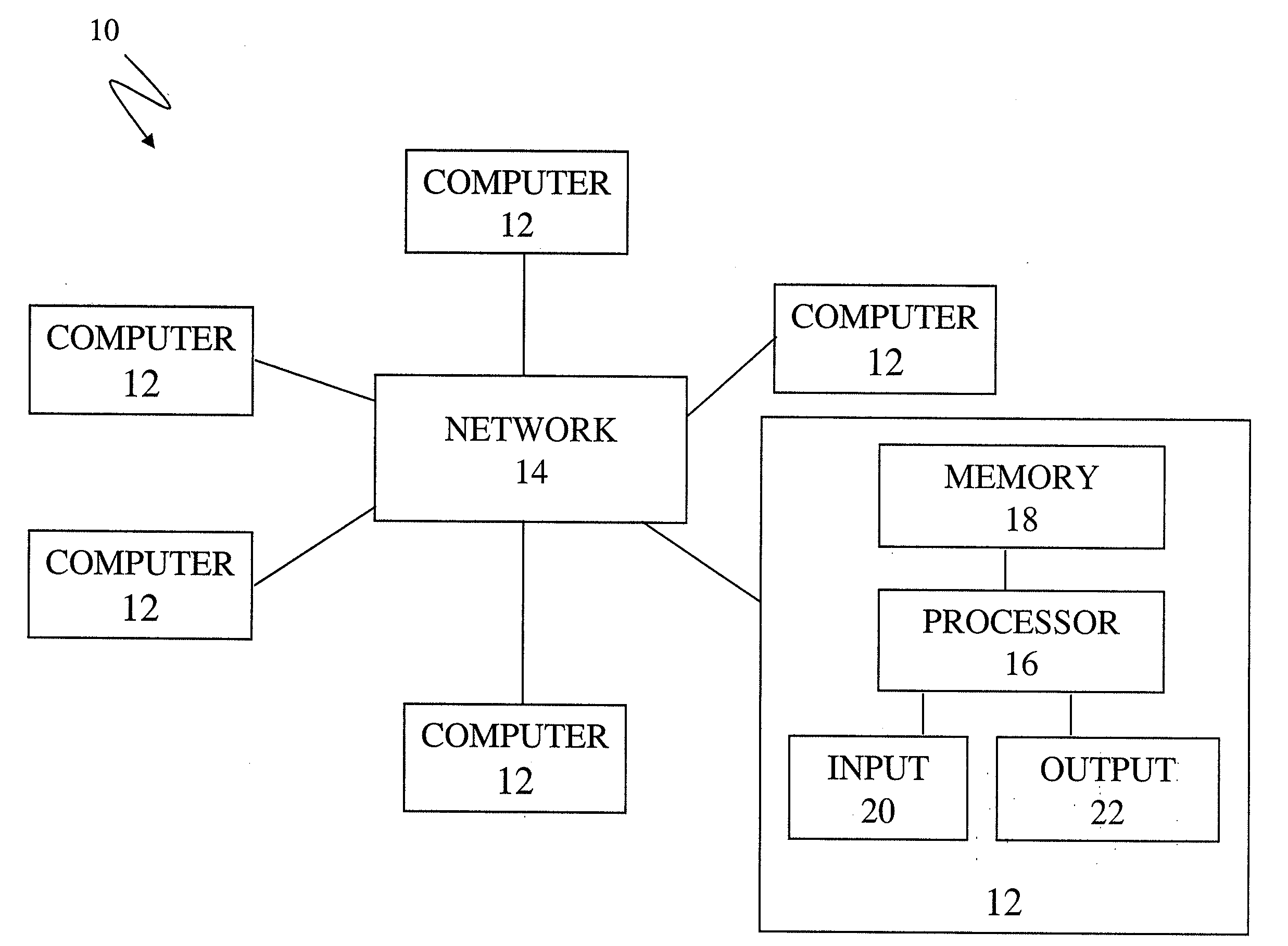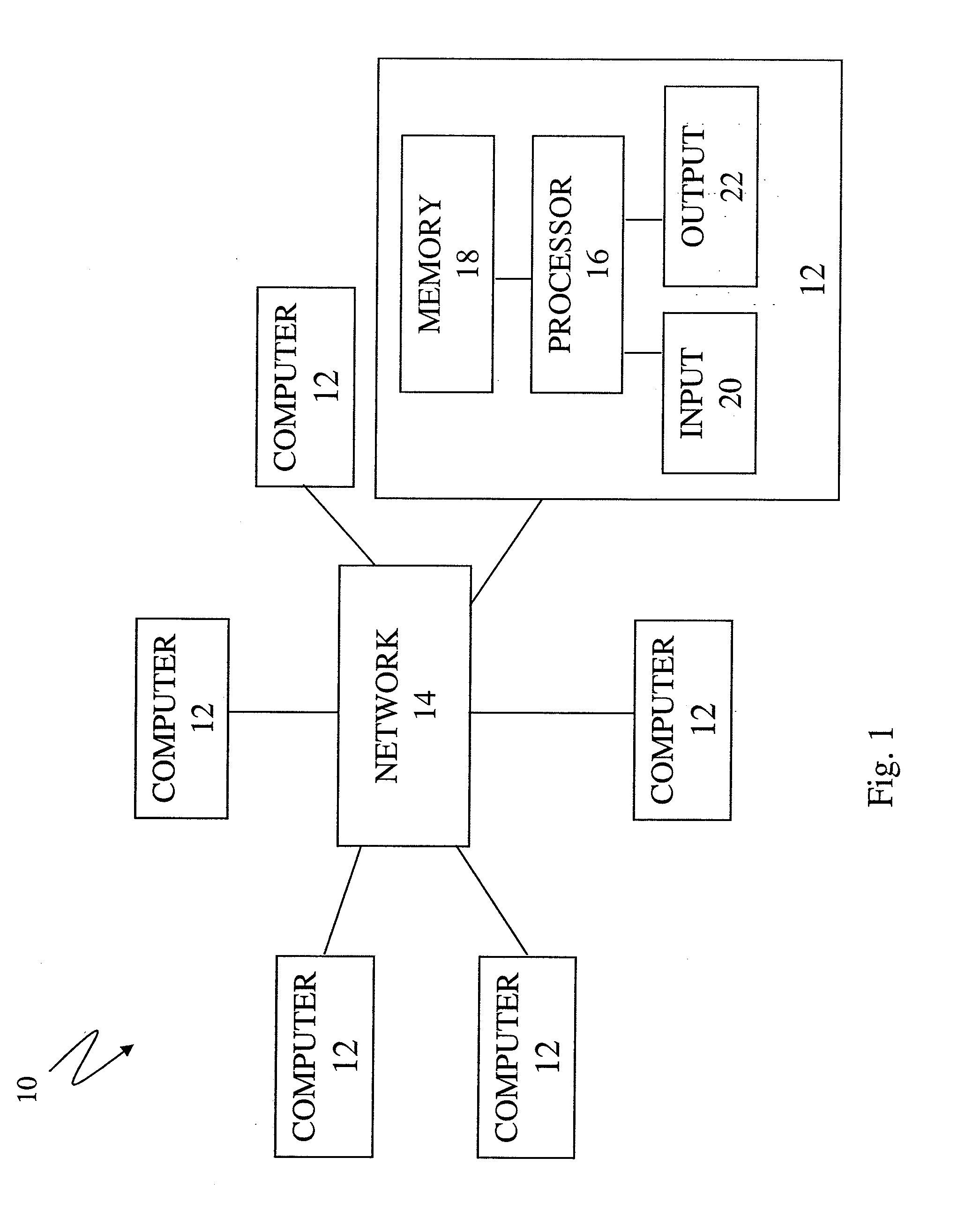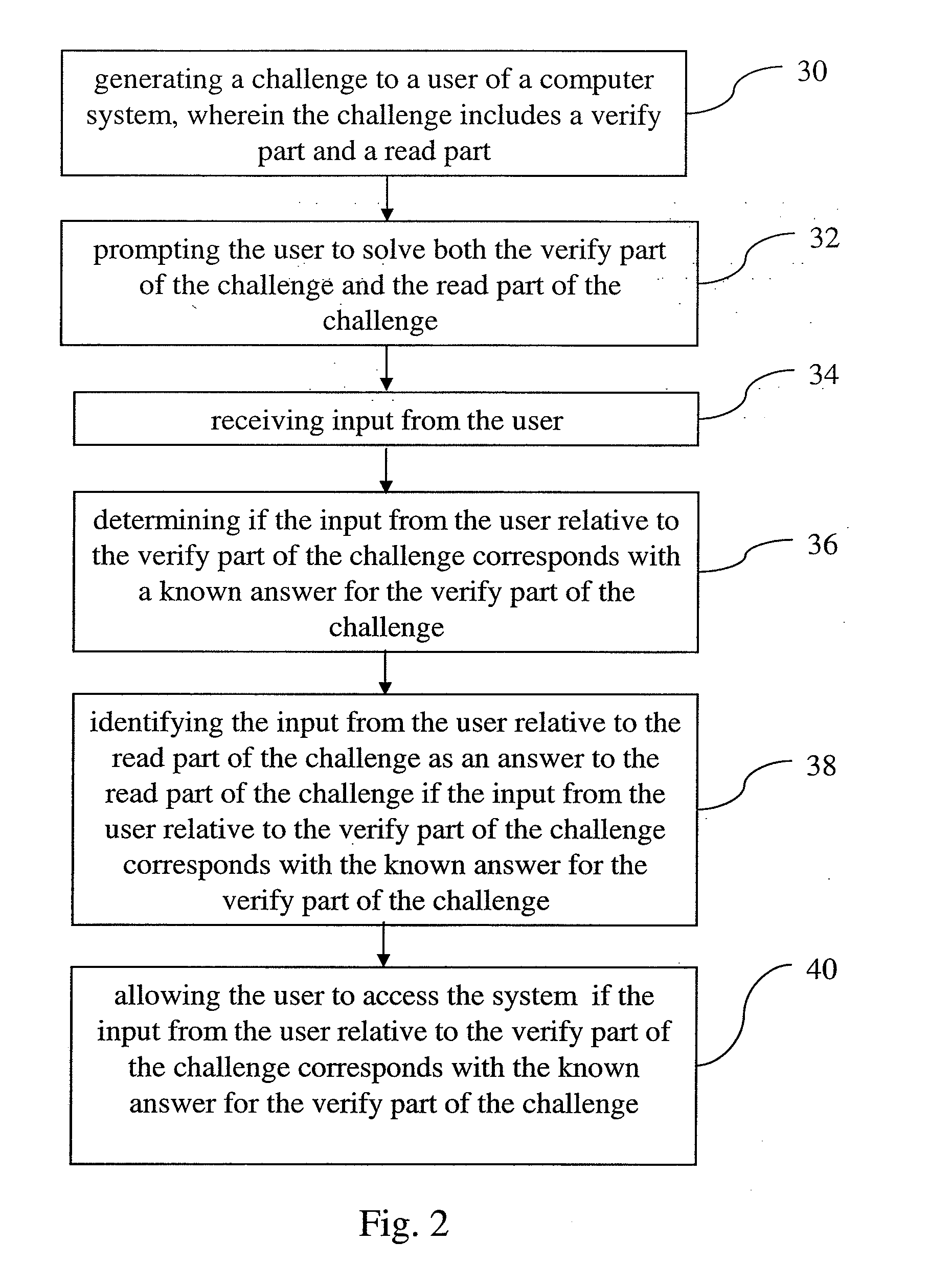[0009]The present invention includes methods and apparatuses for controlling access to computer systems and for annotating media files. In particular, the present invention not only offers improved CAPTCHAs, the present invention allows for the operation of
CAPTCHA solving to be harnessed and used for additional productive work.
[0012]Solving CAPTCHAs, by definition, requires people to perform a task that computers cannot yet perform. The present invention makes positive use of this human effort, and useful results that one may expect to be achieved in this way include, but are not limited to, recognizing text that
optical character recognition (“OCR”) programs cannot interpret, transcribing audio files which voice recognition programs have not been able to interpret, and other uses. In other words, the present invention makes it is possible to use CAPTCHAs to help digitize media that would otherwise not be cost-effective to digitize. In the case of written texts, this means using CAPTCHAs to have humans
decipher the words that computers cannot recognize.
[0013]In particular, the present invention can be used to transcribe old print material, word by word, into
electronic form that can be stored and searched efficiently. The present invention can also be used in connection with handwritten documents, using either handwritten printed characters or handwritten
cursive characters. With regard to handwritten text, the present invention can be used, for example, to transcribe letters and other documents that would otherwise be expensive to transcribe. Handwritten texts are particularly difficult for OCR, and the present invention can harness the power of people solving CAPTCHAs throughout the
World Wide Web or in other venues to assist in this process. Whereas “standard” CAPTCHAs display images of random characters rendered by a computer, the present invention can display words or distorted images of words that come from scanned texts. The solutions entered by the users are then aggregated to improve
character recognition in the
digitization process.
[0016]In part, the present invention will be used to channel the human effort that is spent solving millions of CAPTCHAs every day into “reading” books online. Multiple projects are currently attempting to digitize physical books (e.g., Google Books,
the Internet Archive, etc.). The books are scanned, and then, in order to make them searchable, transformed into
ASCII text using OCR. Although OCR can achieve extremely high accuracy on most books, there are many that are poorly scanned, damaged (e.g., with pencil or pen markings), or that have simply deteriorated with age to the point that the text has been significantly distorted. In such cases, OCR achieves a low percentage of recognition (see FIG. 5, for example). The present invention will improve the process of digitizing books by sending words that cannot be read by OCR programs to humans on the Web in the form of CAPTCHAs.
[0022]An added benefit of the present invention is that if it is ever broken by an automated bot, then that bot can be used to directly improve the
character recognition accuracy in scanned books or in transcribing audio files. That is, improvements in the accuracy of programs in defeating the present invention directly translate to improvements in automated recognition of text in scanned books or audio in recorded clips. This is not true of previous CAPTCHAs, where the images were artificially created.
[0023]In summary, the present invention can be used to distinguish between humans and computers and to generate useful information. Symbols, such as images (or sound clips) which computers cannot interpret, are presented to the entity attempting to access a
web site. Some of these symbols have been previously identified and others, have not been previously identified. If the entity accessing a
web site correctly interprets the previously identified symbol(s) the entity is assumed to be a human and the information that it has entered is assumed to be correct; if the entity does not correctly enter a correct interpretation then the entity is assumed to be a computer. After presenting an unknown word challenge to a number of users determined to be humans, the interpretations of the unknown words are compared and a confidence level established for each interpretation. Once the confidence level of an interpretation reaches a predetermined level the interpretation is assumed to be correct. In this way one can harvest the brainpower of
computer users to gather information which computers are not capable of generating, such as identification of words which cannot be correctly identified by
optical character recognition programs or transcription of speech which
speech recognition programs cannot recognize. To prevent malicious
software from repeatedly providing a consistent but incorrect answer to an unknown word in a challenge, both the previously identified symbol and the unknown word are randomly distorted prior to being presented to the user, preventing the malicious
software from repeatedly recognizing the unknown word.
 Login to View More
Login to View More  Login to View More
Login to View More 


